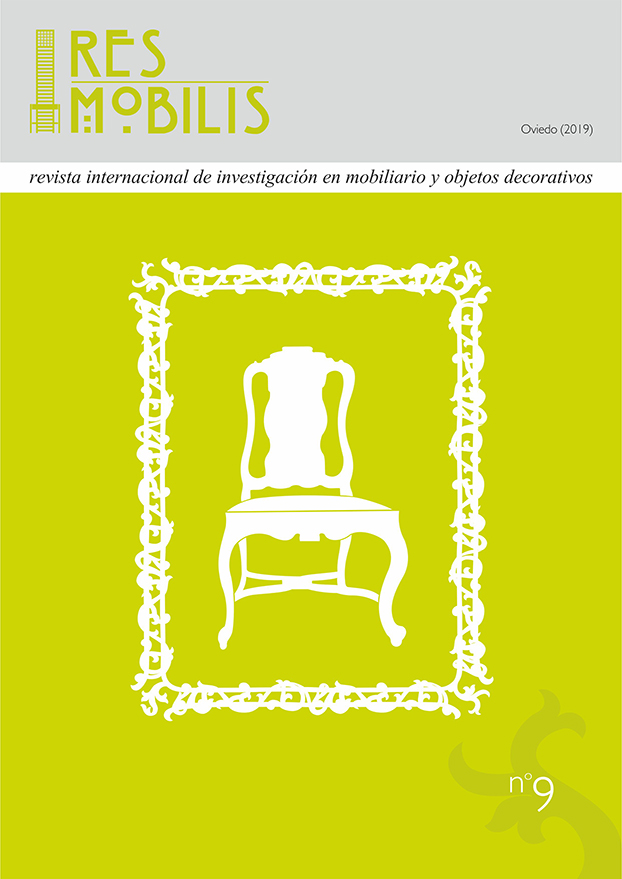Abstract
The French influence in Portugal, felt since the second decade of the Eighteenth century, assumed a particular relevance in the reign of King John V. This growing cosmopolitan interest for the art of the Parisian silver extended from the Royal House to the nobility remained in the second half of the century in Lisbon, favored in large extent by the rupture caused by the cataclysm of 1755, resulting in a new sociological experience inspired by the parameters of French culture.
In the second half of the century the flow of emigration became evident, and a considerable number of french people lived in the city, belonging to the most diverse professions, such as servants, hairdressers, watchmakers, tailors and weavers, and booksellers, engravers, merchants, jewelers and silversmiths. In this field, Alberto Luís Bion, a silversmith of French nationality, stands out,whose learning in this country certainly justifies certain characteristics that are evident in some of the pieces he has executed in Lisbon.
References
ALMEIDA, Fernando Moitinho de; CARLOS, Rita – Inventário de marcas de pratas portuguesas e brasileiras: século XV a 1887, 3ª edição. Lisboa: Imprensa Nacional-Casa da Moeda, 2018.
ESTEVENS, Manuel Santos – Subsídios para a História da Ourivesaria Portuguesa. 1ª parte. Documentos, Documentação do Arquivo da Casa Real (1756-1832), vol. I. Lisboa: MNAA, 1944.
GRIMWADE, Arthur – Rococo Silver (1727-1765). Londres: Faber and Faber, 1974.
GRUBER, Alain – L’argenterie de maison du XVI au XIX siècle. Friburgo: Office du Livre, 1982.
GUERRA, Luís Bivar – Inventário e Sequestro da Casa de Aveiro em 1759. Lisboa: Arquivo Tribunal de Contas, 1952.
LABOURDETTE, Jean-François – La Nation française à Lisbonne de 1669 à 1790: entre Colbertisme et Libéralisme. Paris: Centre Culturel Portugais, 1988.
MABILLE, Gérard – Orfèvrerie française des XVI, XVII, XVIII siècles: Musée des Arts Décoratifs. Paris: Flammarion, 1984.
NEWMAN, Harold – An Illustrated Dictionary of Silverware. Londres: Thames and Hudson, 1987.
NOCQ, Henri – Le poiçon de Paris: repértoire des mâitres-orfèvres de la juridiction de Paris depuis de Moyen âge jusqu-à la fin du XVIIIe siècle. Paris: Laget, 1968.
SALES, Ernesto – Nosso Senhor dos Passos da Graça de Lisboa: estudo histórico da sua Irmandade com o título de Santa Cruz e Passos. Lisboa: Edição do Autor, 1925.
SANTOS, Reynaldo dos; QUILHÓ, Irene – Ourivesaria Portuguesa nas colecções particulares. 2ª ed. Lisboa: Ed. dos Autores, 1974.
SILVA, Nuno Vassallo – Encomenda, uso e coleccionismo de ourivesaria no século XVIII: a Mantearia da Casa de Aveiro em 1752. Revista de História da Arte: Arquitectura, Urbanismo e Artes Decorativas (séculos XVII e XVIII). Lisboa: Instituto de História da Arte. N.º 9 (2012).
SOUSA, Gonçalo de Vasconcelos e – Pratas portuguesas em colecções particulares: séc. XV ao séc. XX. Porto: Livraria Civilização, 1998.
SOUSA, Gonçalo de Vasconcelos e – Riquezas insulares: pratas e jóias das elites de Ponta Delgada (1775-1815). In SOUSA, Gonçalo de Vasconcelos e (coord.) – Artes Decorativas nos Açores: subsídios para o seu estudo nas ilhas de São Miguel e Terceira. Porto: CITAR, 2015.

